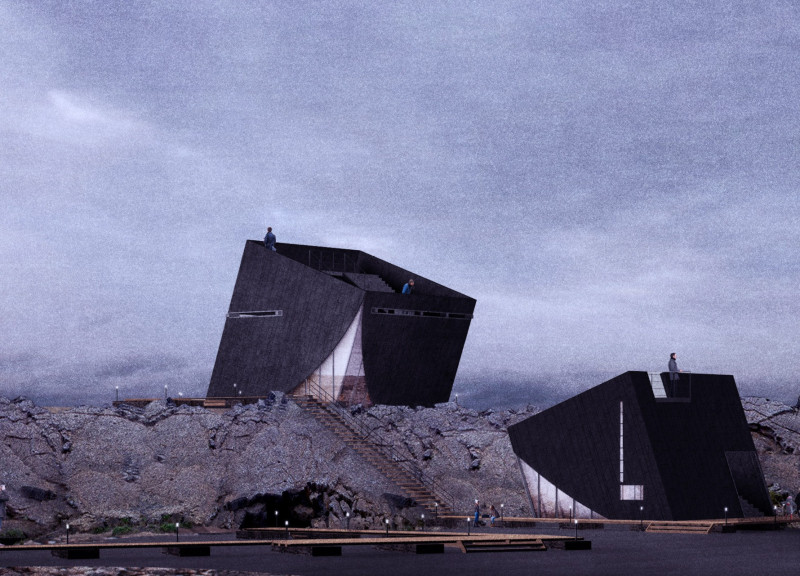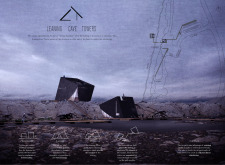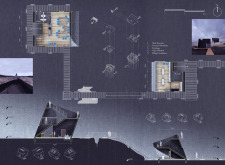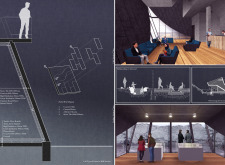5 key facts about this project
The Leaning Cave Towers open a conversation around the relationship between structures and their natural settings. Located near a fissure, the project combines public spaces such as an archive and café with a design concept centered on the idea of “sharing boundary.” The two towers reflect the theme of connectivity while maintaining an intriguing separation, fostering engagement and exploration for visitors.
Architectural Form
The design prominently features a balance between vertical and horizontal elements. The towers rise with a vertical presence, but their placement around the fissure gives the impression of a broader horizontal alignment. This relationship allows the structures to blend with the landscape, creating a visual harmony that invites further examination.
Leaning and Spatial Dynamics
An interesting aspect of the project is the leaning nature of the towers. This tilt introduces energy and movement, encouraging a connection to the human experience. Visitors can relate to the structure as it embodies a gesture that feels familiar. The gently draped forms reveal portions of the interiors, inviting a sense of curiosity and exploration within.
Functional Integration
Visitor accessibility plays a key role in the project’s design. The path module links the two towers, providing a clear route across the fissure. Positioning the car park to the north of the caves takes advantage of existing roads, making circulation efficient while minimizing disturbances to the local terrain. The careful planning enhances the overall flow through the site.
Materiality and Aesthetic
Gabion blocks form the foundation of the path module, making use of readily available materials that resonate with the environment. This choice serves both functional and aesthetic purposes, allowing the path to sit grounded in its context. A wooden walkway rests atop the gabion structure, complementing the surroundings without overpowering them. The open interiors of the towers are well-lit, enhancing the atmosphere. Deep reveals in the facades create shadows that shift over time, adding depth and character to the design.






















































